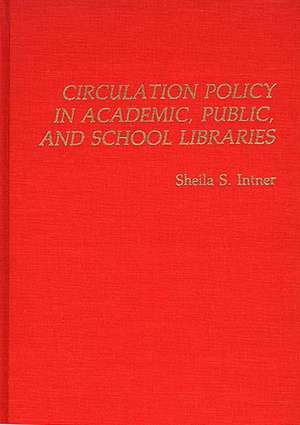Circulation Policy in Academic, Public, and School Libraries: Historical Guides to the World's Periodicals and Newspapers,, cartea 13
Autor Sheila S. Intneren Limba Engleză Hardback – 28 feb 1987
Intner conducted a survey of academic, public, and school libraries in order to study circulation policies and practices prevalent in the U.S. From the data she gathered, it is evident that much in the circulation process is not patron oriented and that there are still institutions that make access to information difficult. She intimates that if library patrons were aware of the power they have, they could effect drastic changes in circulation practices. The book is of interest to all who use libraries, but it is particularly pertinent reading for administrators. "Booklist"
This informative study is based on the responses of a sampling of academic, public, and school libraries to a survey conducted in 1983. The selection was made with a deliberate effort to include libraries of varying size, focus, and geographic area around the country, and three vitally important policy issues were emphasized: Who may borrow materials from the library? What may they borrow? How are materials borrowed and what process is followed when they are returned? The answers provided by the sample group to these and other questions are described and analyzed, and comparisons are made of the ways in each library formulates, reviews and amends its policies, and which plans are being made for the future.
Preț: 468.00 lei
Preț vechi: 646.58 lei
-28% Nou
89.56€ • 93.16$ • 73.94£
Carte tipărită la comandă
Livrare economică 12-26 aprilie
Specificații
ISBN-10: 0313239908
Pagini: 237
Dimensiuni: 156 x 234 x 14 mm
Greutate: 0.52 kg
Editura: Greenwood Press
Seria Historical Guides to the World's Periodicals and Newspapers,
Descriere
This informative study is based on the responses of a sampling of academic, public, and school libraries to a survey conducted in 1983. The selection was made with a deliberate effort to include libraries of varying size, focus, and geographic area around the country, and three vitally important policy issues were emphasized: Who may borrow materials from the library? What may they borrow? How are materials borrowed and what process is followed when they are returned? The answers provided by the sample group to these and other questions are described and analyzed, and comparisons are made of the ways in each library formulates, reviews and amends its policies, and which plans are being made for the future.















